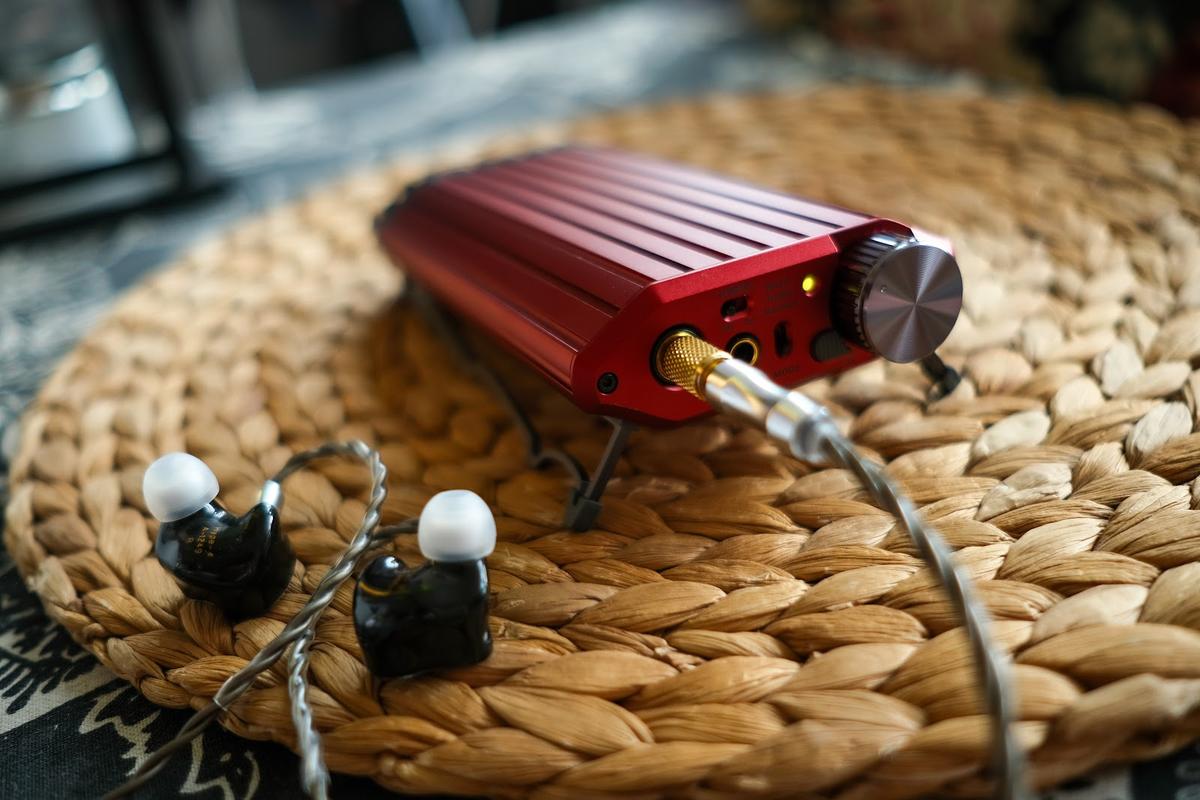The iDSD Diablo 2 delivers desktop-grade sound in a package made for those with huge and deep pockets.
- Vivid, slightly warm sound
- Timbrally rich
- Great resolution
- Small for a desktop all-in-one
- Will drive just about anything
- Large for a portable device
- Desktop mode requires two USB connections
- Too high gain
- IEMatch switch increases the output impedance
- A bit bright-sounding
The iDSD Diablo 2 is the latest in iFi Audio’s line of not-quite-portable DAC/amps, which started with the iDSD Micro almost ten years ago. The elongated extruded aluminum cases have always been their trademark, and, over time, various interesting features were added – Xbass, Xspace, and IEMatch.
The first iDSD Diablo made away with all those add-ons.
iDSD Diablo 2 takes the stripped-down minimalism of its predecessor and adds some welcome creature comforts – IEMatch for sensitive IEMs, Bluetooth connectivity, and more eye-catching looks. Unfortunately, it also adds a hefty price tag to match the overall package.
Read on to find out whether the new Diablo 2 has given up anything vital by ditching the purist approach.
One Minute Review Video
Design and Build
The first Diablo looked almost cartoonish with its stick-o-dynamite looks; the Diablo 2 is a different story altogether. The case is still mostly extruded, but now the extrusion profile has cooling fins instead of a solid surface finish.
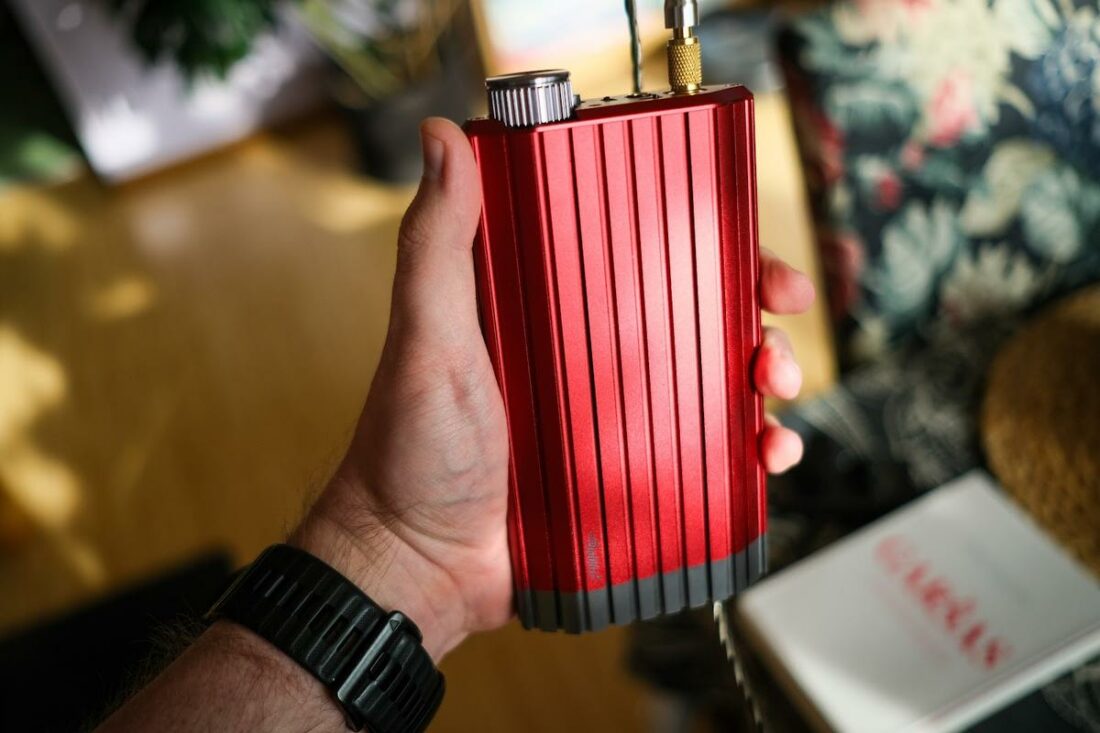
The red anodizing this time is a more subdued color, and the metal gray volume knob and back end introduce interesting accents. Increasing the visual sophistication of the Diablo 2 does wonders for matching its looks with the price tag.
It’s not insanely red this time.
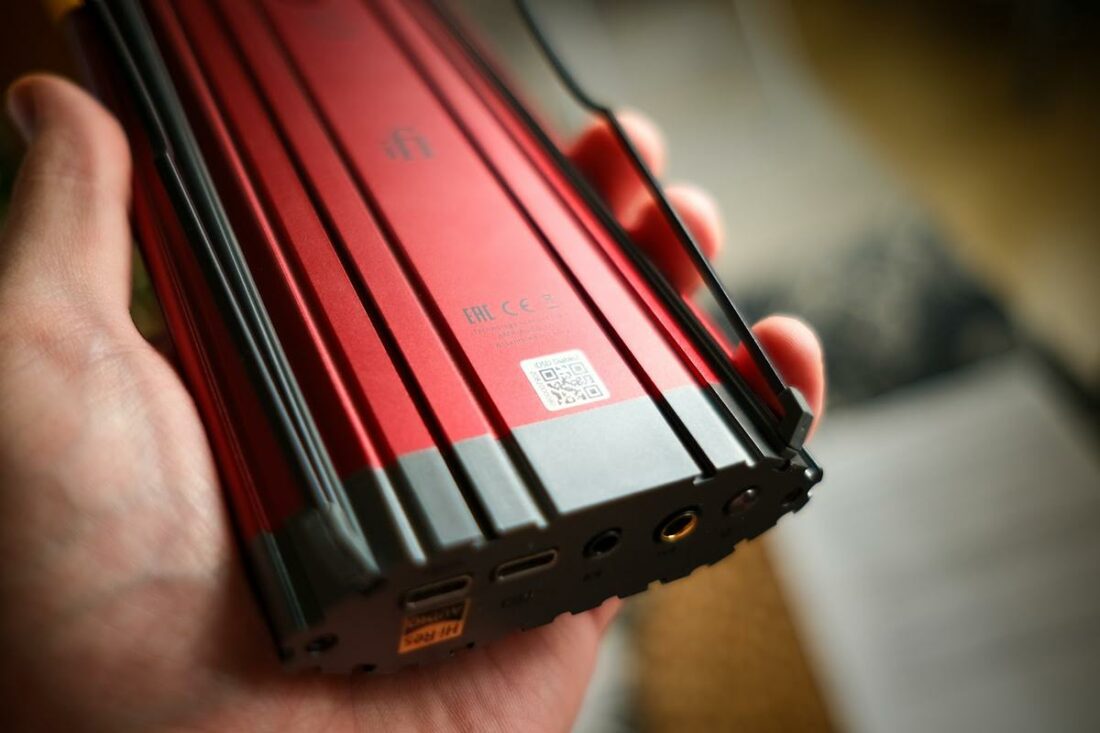
I have no qualms in terms of build quality. The connections are solid, and the toggle switches work nicely. For me, the star of the show is the volume knob which has a buttery smooth feel. The small potentiometer used in the Diablo 2 doesn’t have the resistance of, say, an Alps RK27, but the action feels no less nice.
Bluetooth
The iDSD Diablo 2 has two basic operation modes – wired and wireless. Adding Bluetooth is a major upgrade over the original. While it supports the usual bunch of lossy codecs, the standout is the addition of aptX Lossless.
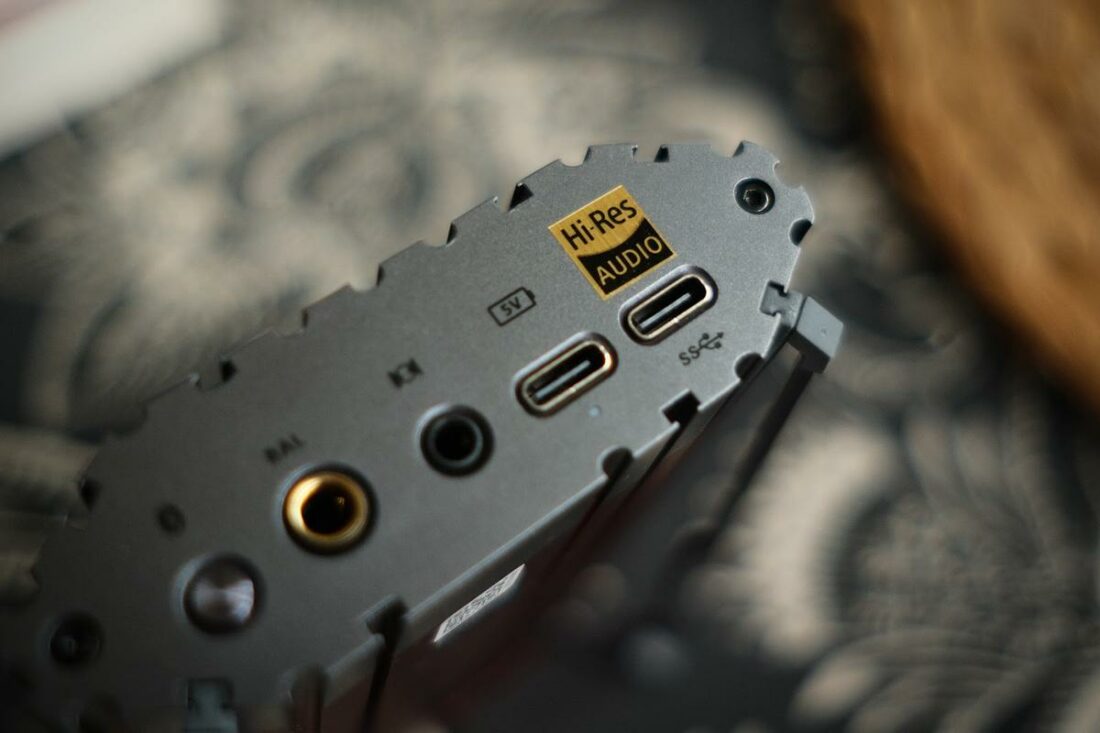
However, there is a rub – the rollout of lossless Bluetooth-capable smartphones has just begun. Apple iPhones don’t have it; only current Samsung Galaxy S24 phones support it.
I had to creep around a local Samsung store to actually test it.
Battery
Just like its predecessor, the Diablo 2 sports a 4800mAh or roughly 17Wh lithium polymer pack. Is that a lot? It depends.
iFi Audio advertises a 2W power draw at low gain or, as they call it, “Eco mode.” A quick math tells us that around 8.5 hours of listening should be possible.
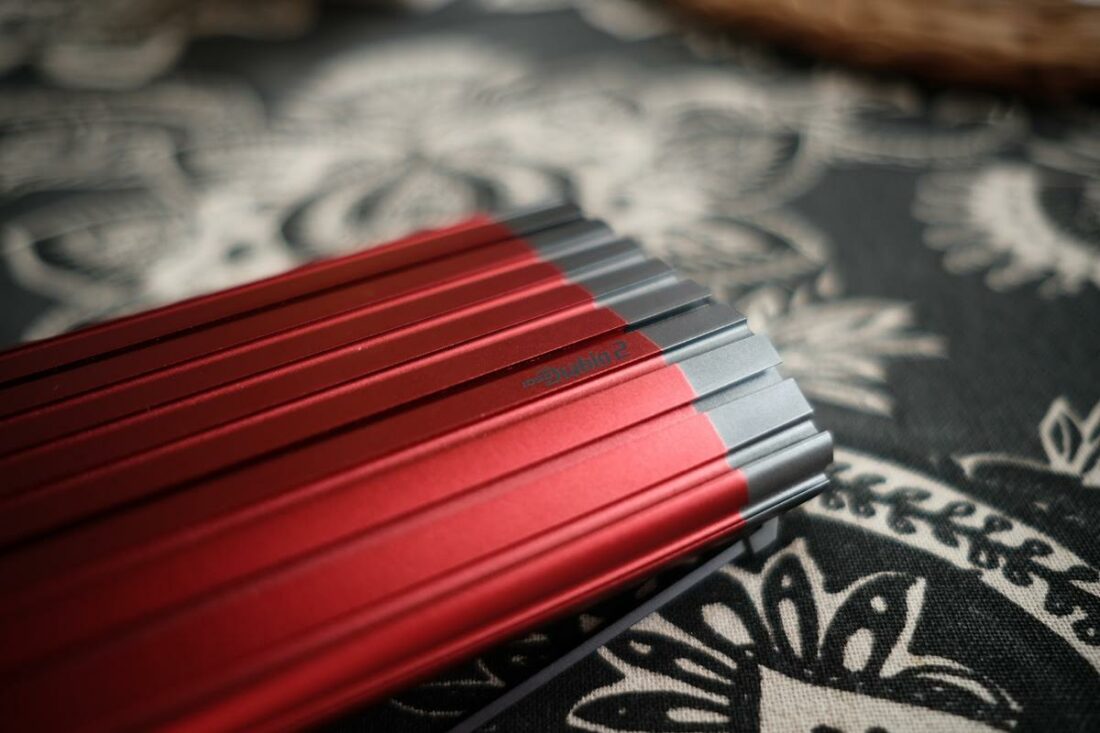
Kicking the Diablo 2 into high gear bumps the power draw up to 5W in mid-gain (Turbo) and 12W in Nitro mode. The problem is that the specification assumes the user will drive super inefficient headphones in these modes.
With efficient IEMs, I found that 12 hours of operation is perfectly achievable.
Charging the battery is done via a separate USB-C port, and using the device via the data connection doesn’t drain the battery on the phone or DAP.
Unfortunately, there is no desktop mode to bypass the battery when running the Diablo 2 from a computer.
Controls
Interacting with the iDSD Diablo 2 is rather simple – turning the volume knob engages the unit, and it immediately switches into wired mode. It will take a signal from the USB, SPDIF, or line-in connections. Pushing a small button on the back toggles wireless mode and engages the Bluetooth connection.
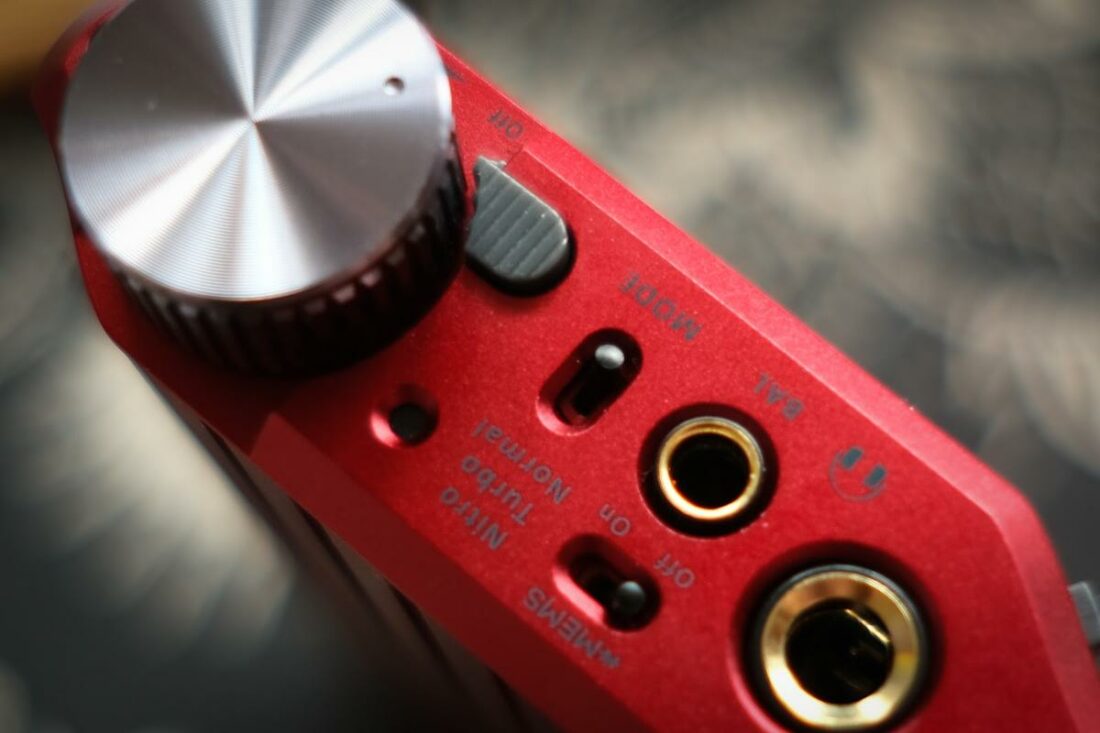
Underside the Diablo 2, we see the IEMatch toggle, which engages resistive attenuation for either the 6.35mm TRS or the 4.4 balanced outputs. I’ve always found it a peculiar choice as it increases the output impedance, which changes the sound of almost all IEMs. Luckily, the outputs were silent enough not to force me to use this feature.
Under the Hood
After reviewing many ESS and AKM DACs, I found the iDSD Diablo 2 a breath of fresh air. It uses a pair of Texas Instruments DSD1793 chips for a true balanced output. The analog section is opamp-based and uses iFi Audio’s own custom chips.
iFi Audio also boasts that the implementation of the analog stage uses negative feedback in a way that’s less detrimental to the subjective sound experience. The “OptimaLoop” method implies that the opamp stage has only a local loop instead of wrapping all stages in global feedback.
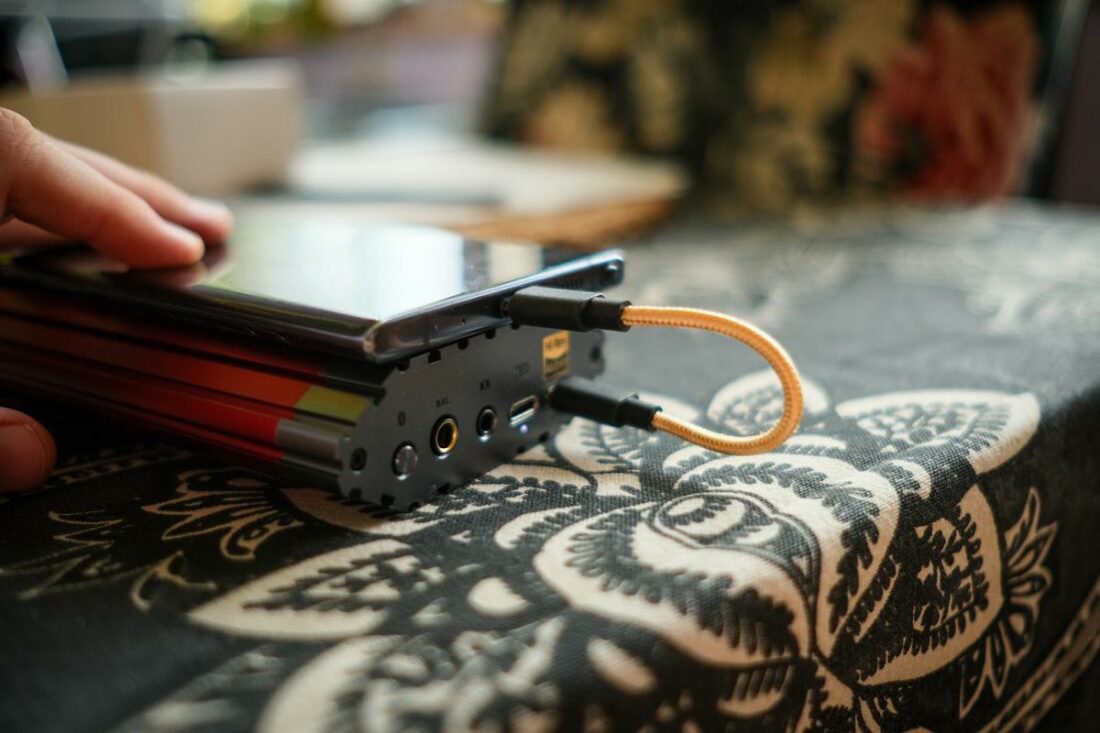
I’ll admit that lately, I’ve been having a bit of opamp-fatigue from the amps I’ve reviewed, but the Diablo 2 does enough things differently to keep it fresh and exciting. Let’s see if this is reflected in the sound as well!
How Does the iDSD Diablo 2 Sound?
Let’s first get the obvious out of the way – the Diablo 2 is very powerful. While Cameron “Goldensound” Oatley rightly called iFi Audio out for inflating the power specs, the more realistic 2W rating is still a lot, even if it isn’t class-leading. FiiO’s gargantuan Q7 can do 3W, which is… a measly +1.76dB more.
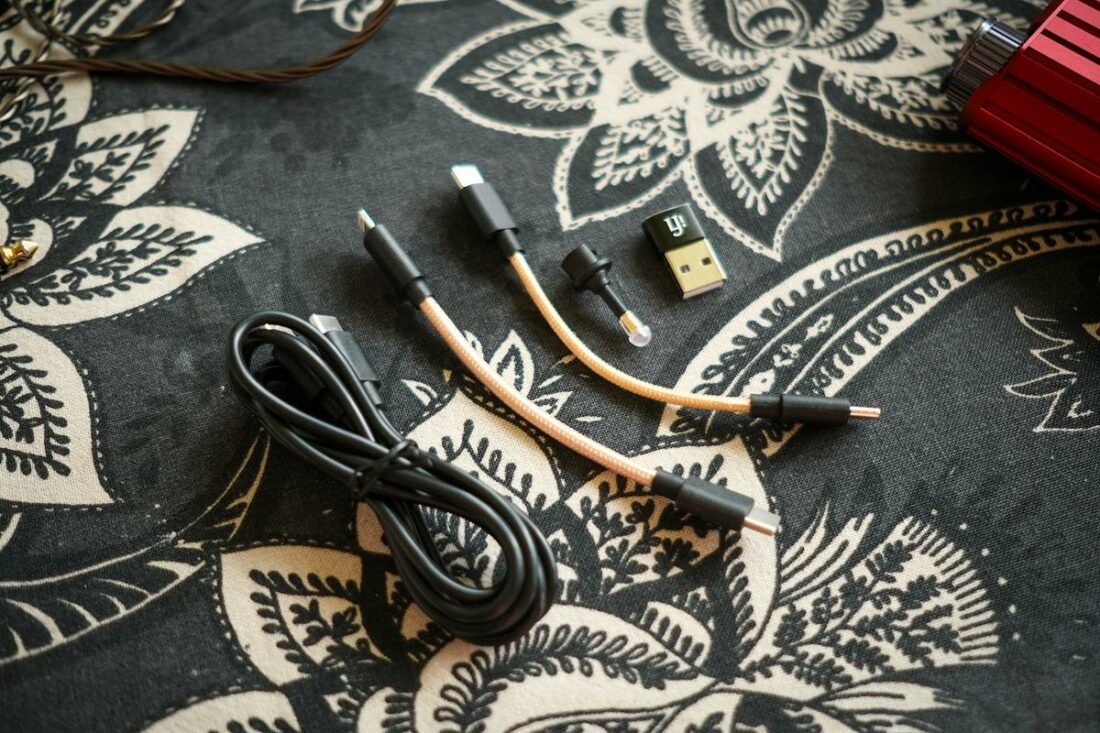
In my opinion, a more serious blunder is the gain settings – Eco mode’s 0dB is too much for super-sensitive IEMs.
With the 127dB/V sensitive Simgot EA1000 IEMs, I must keep the volume at 9 o’clock for everyday listening. Although, I’m happy to report that I couldn’t detect any hiss or volume imbalance with the EA1000.
More sensitive IEMs need to rely on the IEMatch feature for more usable volume control space. It is too bad that it will come at the cost of tonal balance due to output impedance going from almost zero to 6 ohms.
Driving more demanding loads like the Moondrop Para is no problem – even in Eco mode, bumping up the volume to around 70% does the trick. And the Diablo 2 sounds mighty fine while doing so!
The 350 ohm FiiO FT3 is the same story – high impedance and high sensitivity is an easy load.
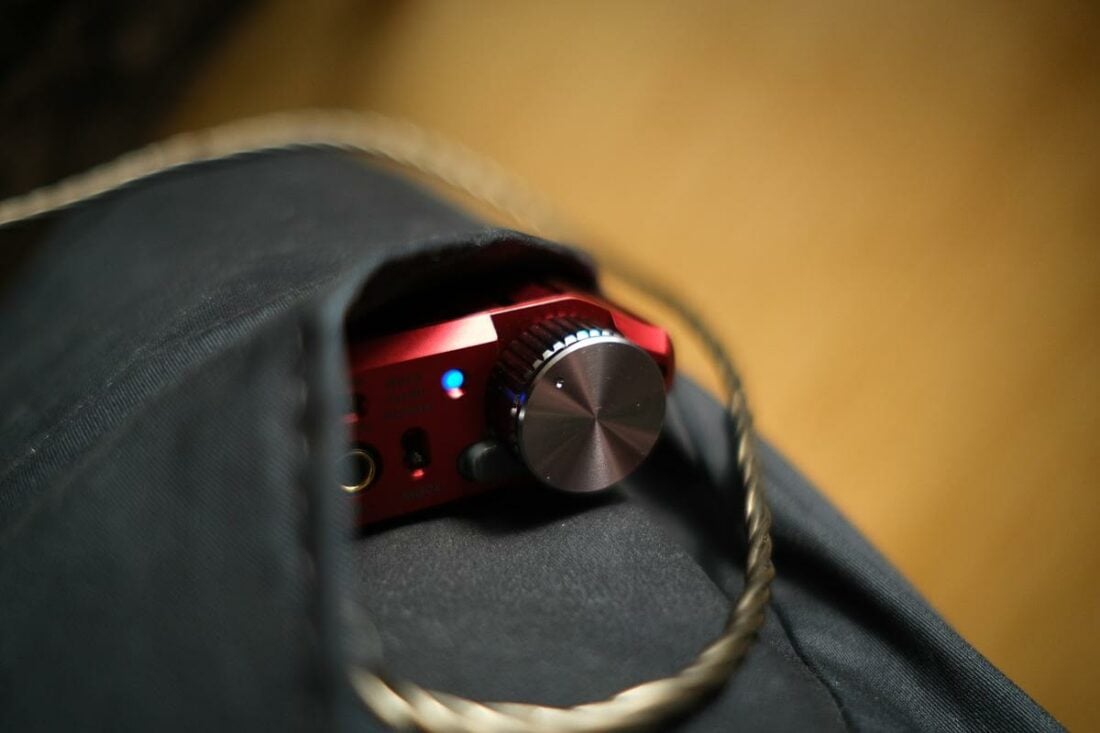
Now, let’s move on to how the iDSD Diablo 2 sounds. To be frank, I was rather gobsmacked when I first hooked it up. And the sensation wouldn’t let up throughout the whole testing process. I could easily live with the Diablo 2 as my main headphone listening system.
iFi Audio have really done it – desktop performance in a pretty portable package!
Now, I wouldn’t call the Diablo 2 completely neutral sounding – after weeks of listening, it seems to be on the vivid side of things. And I love it! Right from the get-go, I could tell that iFi Audio went for a certain sound signature and achieved it with gusto.
My favorite pairing is the darker Thieaudio Hype 4, which benefits from the Diablo 2 wake-up. The Simgot EA1000 is already tuned slightly bright, and the energetic tuning proves too much of a good thing when paired with the Diablo 2.
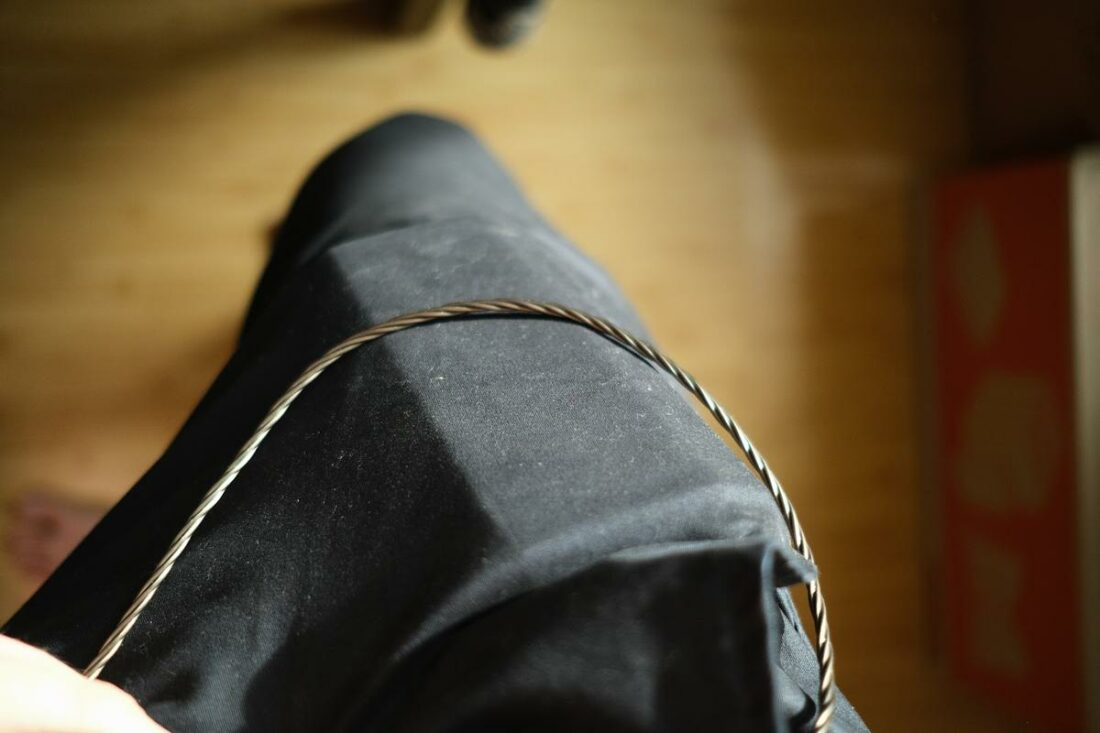
I’m also pleasantly surprised how close the Diablo 2 comes to my reference SMSL SU-X/SH-X in terms of technicalities. The SMSL renders a wider image with more micro-detail, to which the Diablo 2 answers with a more on-your-face presentation and serves up more macro-detail.
Comparisons
There aren’t many portable DAC/amps in the above-USD $1000 category, and I don’t have any in my stable at this time. Therefore, I’m putting the iDSD Diablo 2 between the FiiO Q15, which is also a chunky almost-portable, and my reference stack, which comes close in terms of price.
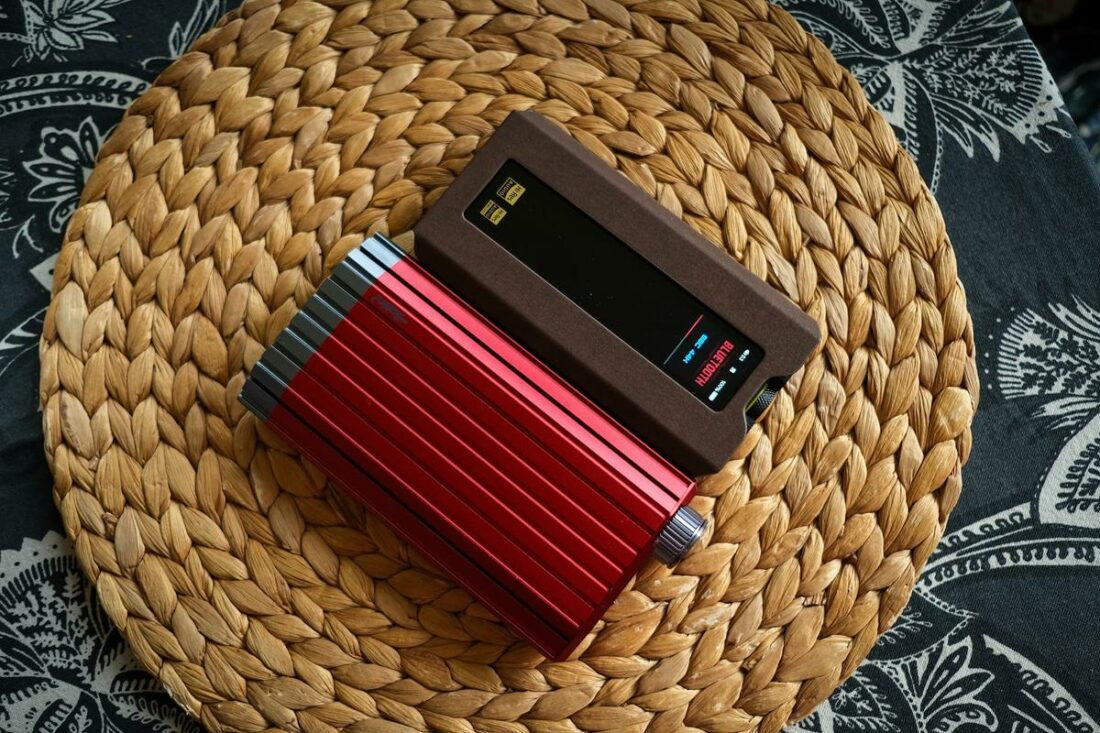
FiiO’s newest big boy DAC/amp sports a similar desktop-grade DAC chip – the AK4499EX with its companion, the AK4191EQ modulator chip, and an opamp output stage. Sonically, it’s the complete opposite of the Diablo 2 – very smooth and wide, yet fairly resolving. While the Q15 doesn’t sport lossless Bluetooth, the ace up its sleeve is the EQ capability.
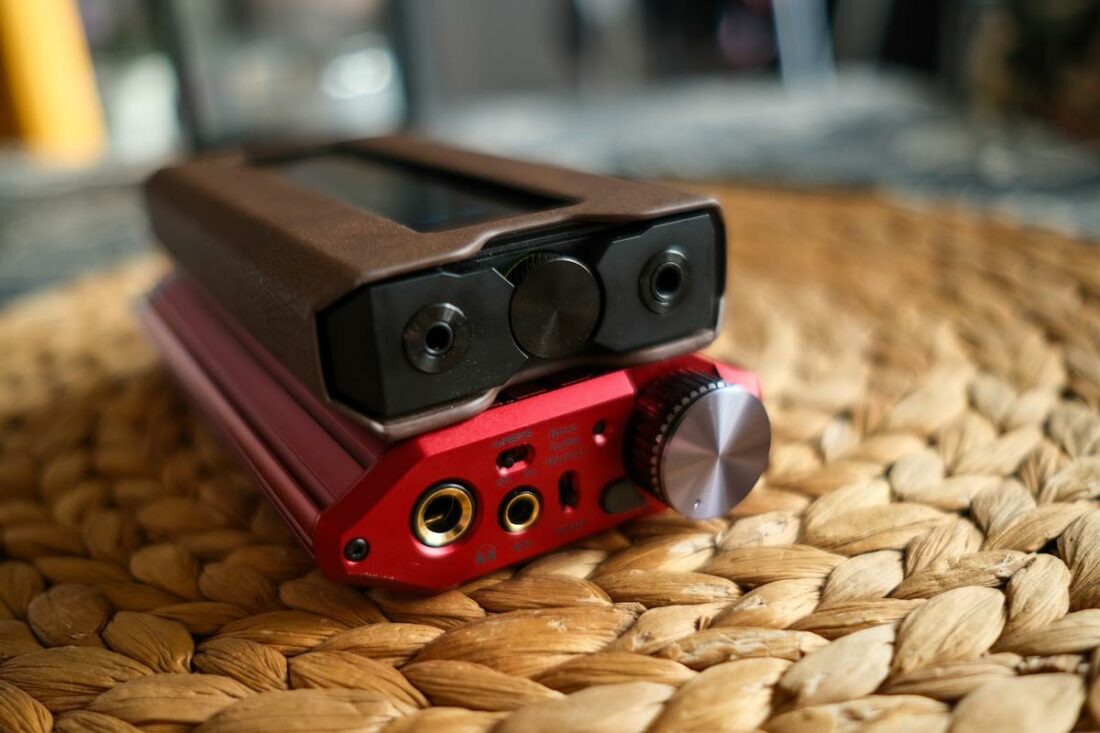
The SMSL stack is where it gets interesting – the Diablo 2 really trades punches with it! In terms of immediate impressions, I’m sure most people will prefer the rowdier Diablo 2. The more neutral signature of the SMSL SU-X and SH-X makes technicalities less apparent, even if they’re ultimately better.
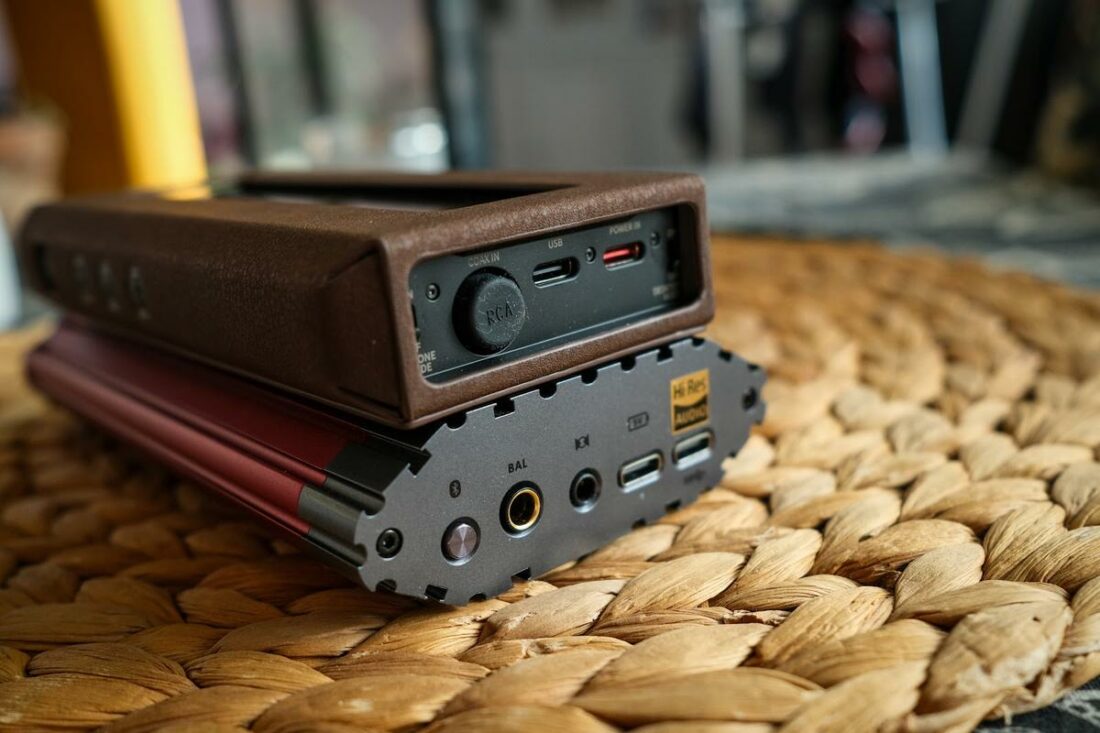
Where to Buy
Who Should Buy This?
The iFi iDSD Diablo 2 is the perfect DAC/amp for the on-the-go music enthusiast. Let’s be honest: no one will stuff it into a pants pocket and go shopping at the mall (I tried). Having one on the train, plane, or in the office would make the hours fly by faster, that’s for sure.
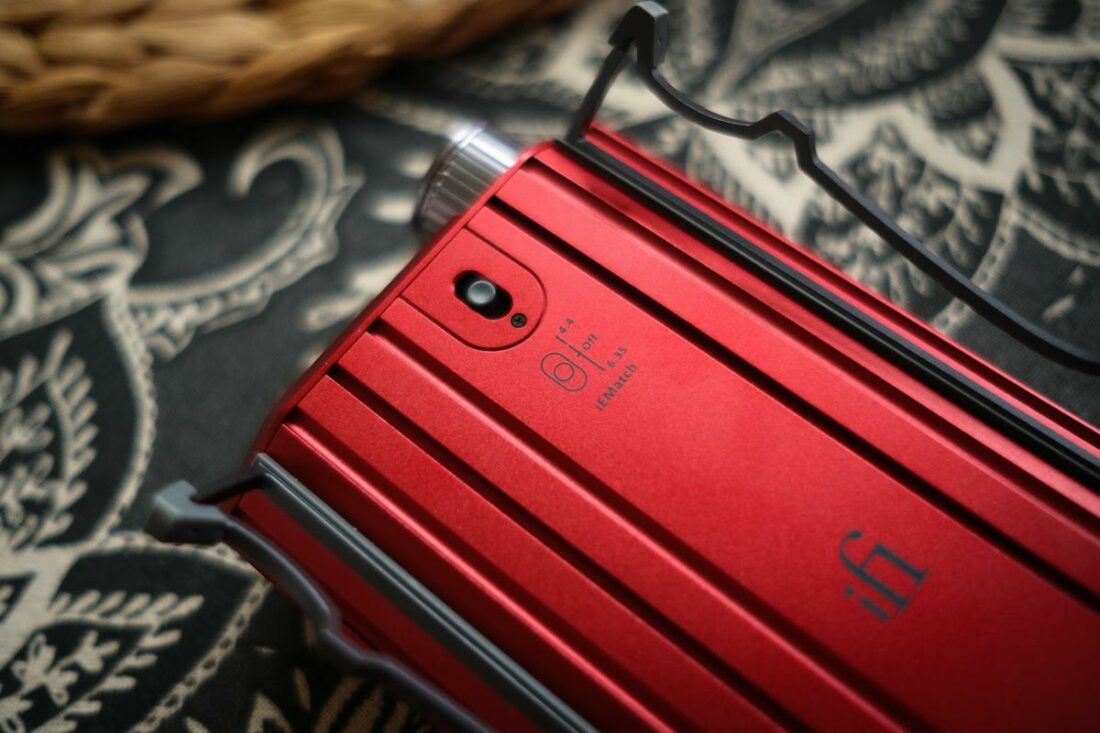
For proper pairing, I recommend darker headphones or IEMs like the Audeze LCD-2 or Thieaudio Hype 4. A neutral tuning will also work fine, but brighter-sounding transducers will bring ear fatigue.
Final Thoughts
The iFi Audio iDSD Diablo 2 is the closest I’ve heard to the Holy Grail “desktop sound in a portable format.” Well, maybe “transportable” is more apt as the size and weight make the Diablo 2 more fanny-pack than pocket-fi. Good news, it even comes with a nice bag to carry it around!
Diablo 2 isn’t without faults – the gain is too high for very sensitive IEMs, and IEMatch can sometimes do more wrong than good. The Nitro mode has more gain than is needed for 99% of headphones out there. The xMEMS mode is a curious addition, but, as of now, almost no IEMs use it.
It’s really the relatively high price tag that puts things into perspective for me. I could probably put together a better-sounding desktop system for that kind of money, but it wouldn’t be portable. In the realm of portables, there are lower-priced alternatives that deliver similar power but fall short in terms of sound.
It’s easy to succumb to temptation with what’s on offer here because there is a lot to like. The real question is whether the Diablo 2 fits the way you listen.
What’s in the Box?
- iDSD Diablo 2
- iPower 2 power supply
- USB-C cable
- USB-C-to-A adapter
- 3.5mm TOSLINK optical adapter
- 3.5mm to 6.3mm headphone adapter
- iTraveller carrying case
- 2 sets of slide-on feet
Technical Specifications
- Form: Portable, DAC/Amp
- Frequency Response (Hz): 20 Hz – 90 kHz
- Output impedance: <1 ohms regular, 6 ohms with IEMatch
- THD+N: 0.002%
- SNR: ≥114dB(A)
- Output power: SE: >9.6V/153mW (@600Ω), >8.85V/2450mW (@32Ω), BAL: >19.2V/611mW (@600Ω), >12.87V/5180mW (@32Ω)
- Gain: 0dB (Eco), 8.5dB (Turbo), 17dB (Nitro)
- Data rates (USB): PCM – 32bit (44.1 – 768kHz), DoP256
- Data rates (Optical & Coax): PCM – 24bit (44.1 – 192kHz coax, 96kHz optical)
- Bluetooth Version: 5.4
- Bluetooth Audio Codec: aptX Lossless, aptX Adaptive, aptX, LDAC, LHDC/HWA, AAC, and SBC
- Battery Life (hrs): <6h Nitro mode, 10 – 12h Eco mode
- Battery capacity: 4800mAh
- Power consumption: Nitro 12W, Turbo 5W, Normal 2W, xMEMS 8W
- Weight (g): 455g
